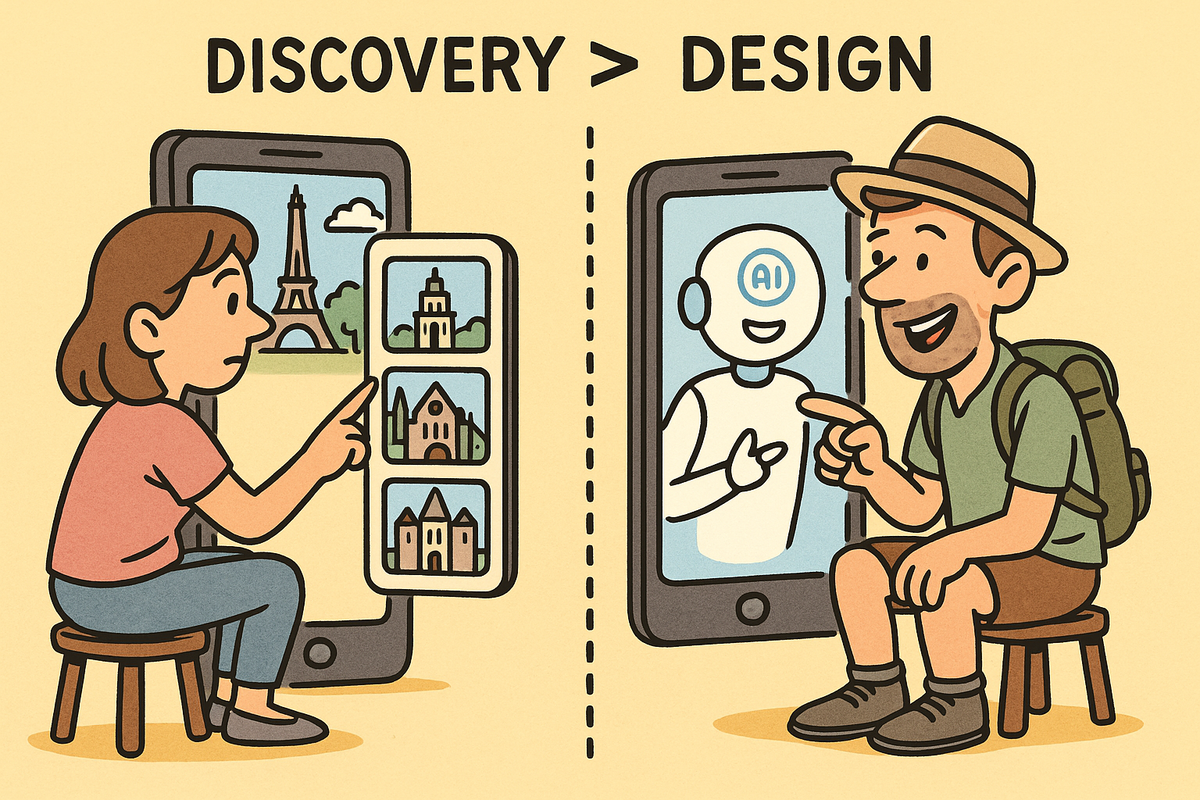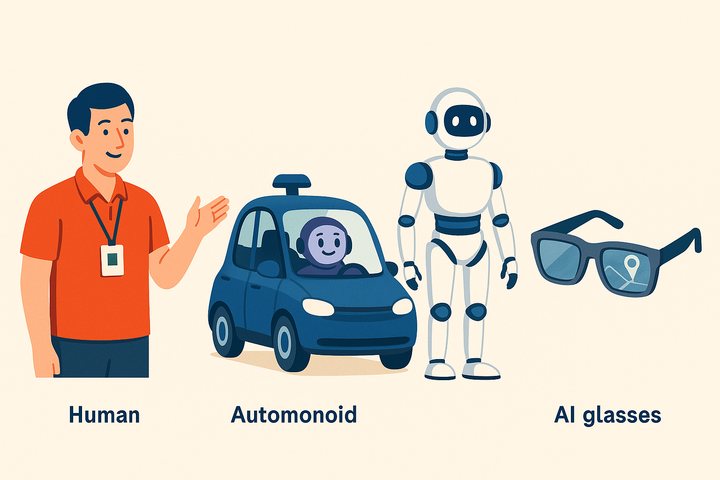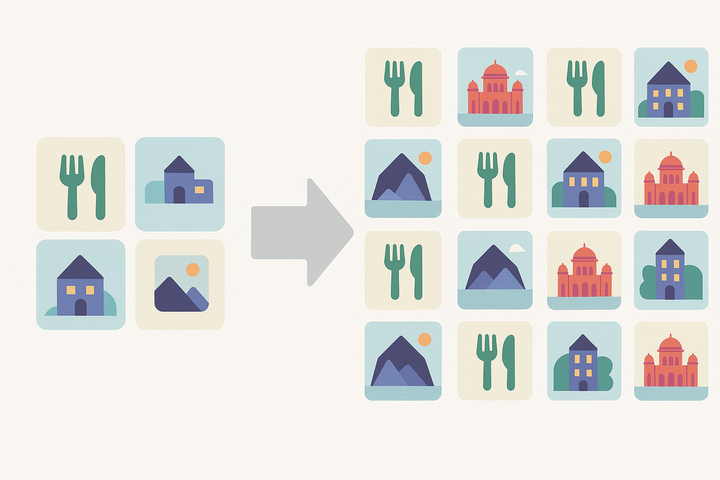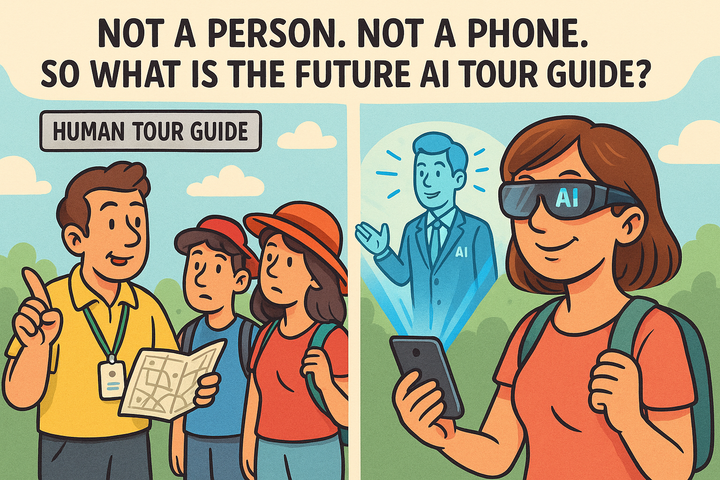The sightseeing shift: With AI, guests want to design — not discover
The sightseeing industry is still optimising discovery, but AI shifts the game entirely — guests don’t want to browse options, they want to design their own

I recently went on holiday to the French alps, actually consuming products from the tourism sector, along with my family. I rode a mountain bike, did a white water rafting descent, did a rope course with zip lines, did a couple of airport transfers, stayed in a 2 meals a day leisure focussed hotel.... all the things we spend our time talking about within tourism technology.
Also it cleared my mind, which after all is why people go on holidays, right?
And in that space, one thing became unmissably clear: the sightseeing industry is not ready for the AI revolution.
I don’t say that casually. Over the past few years, I’ve spoken and written extensively about AI in tourism — at Arival, Tourpreneur, WTM, ITB, PhocusWright, and across multiple podcasts and white papers. I’ve tried to make the case wherever people would listen. In fact, I first raised these ideas half a decade before ChatGPT brought AI into the mainstream conversation.
But despite that, I’m increasingly unsure the industry is prepared for what’s coming. Lately, I’ve found myself in a bit of a funk — not for lack of trying, but because I’m starting to wonder whether the battle can be won with the current collective mindset.
Two recent articles — one from Arival and one from GetYourGuide — pushed me to write this post
- Johannes Reck - GetYourGuide - "The harsh truth about innovation? It's meaningless without strategy"
- Martin Harlow - Arival - "Future-Proof Your Tour Business with a Smart Tech Stack"
Both start with the same premise, asking us to step back and think, what is it consumers want?
Martin starts with: "Ask yourself: How do customers find you? What barriers exist between interest and booking?"
Johannes starts with: "Too many companies chase shiny objects without asking the crucial questions. Founders and operators need to ask: does this solve a real customer problem? Does this advance our strategic goals? "
And sure — on the surface, that sounds right. But here’s the problem: they’re both still working inside the same frame. A better funnel. A smarter stack. More efficient discovery.
That’s not wrong. But it misses the point.
My big question I have about consumer behaviour is - Do guests want personalised experiences?
Do they want their tour to start from their hotel rather than a central meeting point? Do they want their tour in Spanish rather than English? Do they want their tour to take into account they have limited walking capability, or prefer to eat vegetarian foods?
If so, they want a personalised family-centric experience, not to be matched to a pre-existing tour itinerary that is more of a group tour experience.
In which case, we should be talking about how consumers design this experience, and how local suppliers operate these great variety of itineraries. Operating 1000 itineraries for 1000 family groups is not the same as operating 10 itineraries for 1000 family groups.
How do consumers discover that?
Let customers design their own itineraries? – If we’re serious about personalisation, discovery can’t just mean browsing fixed tours on a booking site. It needs to become a creative process — where travellers express what they want, and the system helps shape it.
Discovery becomes itinerary design – The question shifts from “Which tour should I choose?” to “What do I want to do today?” That means helping travellers articulate their preferences — interests, pace, dietary needs, accessibility — and then building a matching experience dynamically.
AI-powered discovery – Just as Spotify or Netflix suggests what fits you, travel discovery should become conversational, contextual, and adaptive — powered by AI that understands both the traveller and the destination in real time.
How do we operate that?
New mobility – If we want to offer personalised experiences, vehicles can’t be 50-seaters. We need smaller-capacity transport that can flex to individual itineraries.
New AI tour guides – Personalisation at scale means we can't rely on one human guide per group. AI tour guides unlock 24/7, language-adaptable, context-aware guidance — tailored to each traveller.
New tech stack – The current systems were built for fixed products and scheduled departures. What we need now is infrastructure that supports dynamic creation, matching, and operation of one-to-one itineraries.
If this hypothesis is correct:
This requires a new tech stack so Martin's outline is not as future proofed as it was advertised as.
The distribution funnel inverts so Johannes' perspective that "Our north star remains unchanged: helping modern travelers discover and book experiences worth traveling for with absolute confidence" requires some adjustment. The word discover needs to be replaced with design — because in the future, consumers will design itineraries, not suppliers.
When we were in France, we had to design our own days — stitching together activities, logistics, and meals based on our preferences. It wasn’t hard because the destination lacked things to do. It was hard because nothing was built to help us design. That’s where AI comes in. Not just to help guests discover what’s available, but to help them craft what’s possible. The shift from discovery to design isn’t optional — it’s inevitable. And AI is the only way to make it scale.
Martin is going to need a new tech stack.
Johannes is going to need a GPS.
And frankly, we’re all going to need a new conference.
Want to read more like this?
Low volume. Short length. Focused content.
We know you're busy — only the good stuff, no noise.



